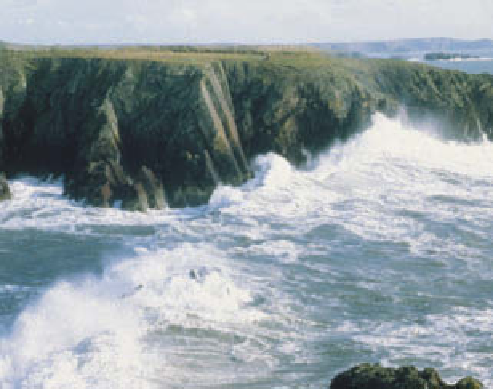Geoscience Reference
In-Depth Information
Earth's oceans continue to assume greater and greater
importance in our understanding of the Earth system and
the processes of climate change. It is emerging from its
position as the 'Cinderella' of physical geography. Despite
the fact that they are Earth's largest single surface, covering
70 per cent of its surface area, they were until recently
perceived as a
black box
of largely invisible parts operating
as a homogeneous, stable system. The global ocean has
a monotonous surface except at the coastline and is
apparently subject only to slow spatial and temporal
change. Above all, oceans are not the habitat of humans
and the marine environment is directly hostile to human
life, although supportive in other respects. What has
happened to change our indifference? Concern about
global environmental change leads us increasingly to
appreciate the integrated nature and fast response times
of many previously neglected planetary systems -
including oceans - and interest in our own future security
does the rest!
The global ocean is the largest single moderating
influence on extremes of radiation budgets and climate
and the source of most precipitation. It is coupled
geochemically with the atmosphere, buffering Earth
between the extreme environments of lithosphere and
space, and receives and recycles sediments eroded from
the continents. Biologically, oceans house some of the
world's simpler yet locally most productive ecosystems.
Oceans are instrumental in climatic change, leading or
responding to changes in other interactive systems.
Six important oceanic parameters - geometry, volume,
sea level, composition (especially salinity), temperature
and circulation - are now linked with the atmosphere
and climate in
Atmosphere-Ocean General Circulation
Models
(AOGCMs) and explain their role in global climate
(see
Chapter 6).
Vested human interest also focuses on the land-sea
'
ecotone
' - the coastline - which houses Earth's highest
concentrations of human population, agriculture and
industry through choice or necessity (
Plate 11.1
).
Many
peoples - the British, Japanese, Caribbeans, Indonesians
and Polynesians, for example - are islanders; many others
occupy the more benign coastline of inhospitable desert,
polar or mountainous regions. All have a strong maritime
continent on the Pembroke coast of south-west Wales, in one
of Earth's most dynamic environments.
Photo: Ken Addison










































